Leora J. Goodin
I'm a blogger dedicated to sharing insights on lifestyle and wellness. Through personal stories and practical tips, I aim to inspire and empower my readers to lead healthier, more fulfilling lives.
Black Friday and Cyber Monday 2023 Deals for Motion Designers, grab it now!
Students and teachers save a massive 71% on Creative Cloud All Apps
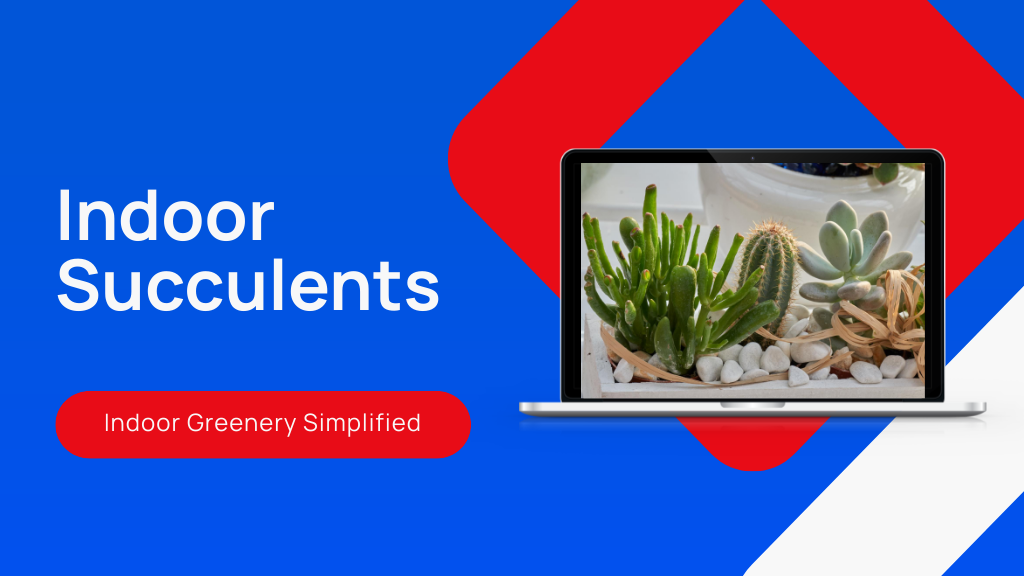
Brighten your home with 7 indoor succulents perfect for low-light conditions, but which ones thrive best with minimal care? Discover the secrets inside.
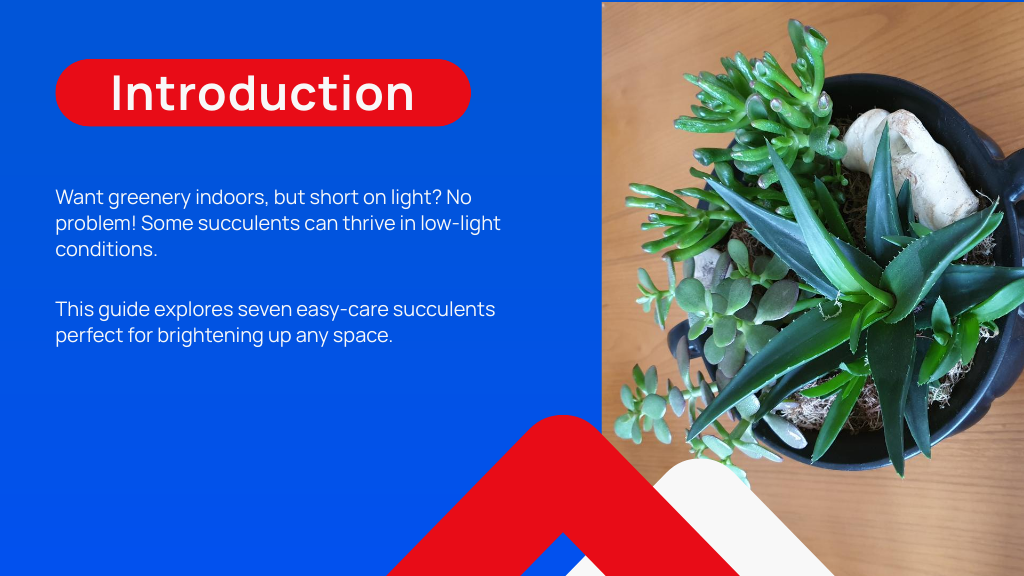
If you want indoor succulents that thrive in low light, try snake plants, lance aloe, or shade-tolerant Echeveria varieties like Echeveria lilacina. Panda plants and zebra Haworthia also do well, plus mistletoe cactus adds unique cascading leaves. These succulents need around 4 to 8 hours of indirect or filtered light and minimal watering. With the right care, they brighten your space without demanding much. Keep exploring, and you'll discover tips to keep these beauties thriving effortlessly.
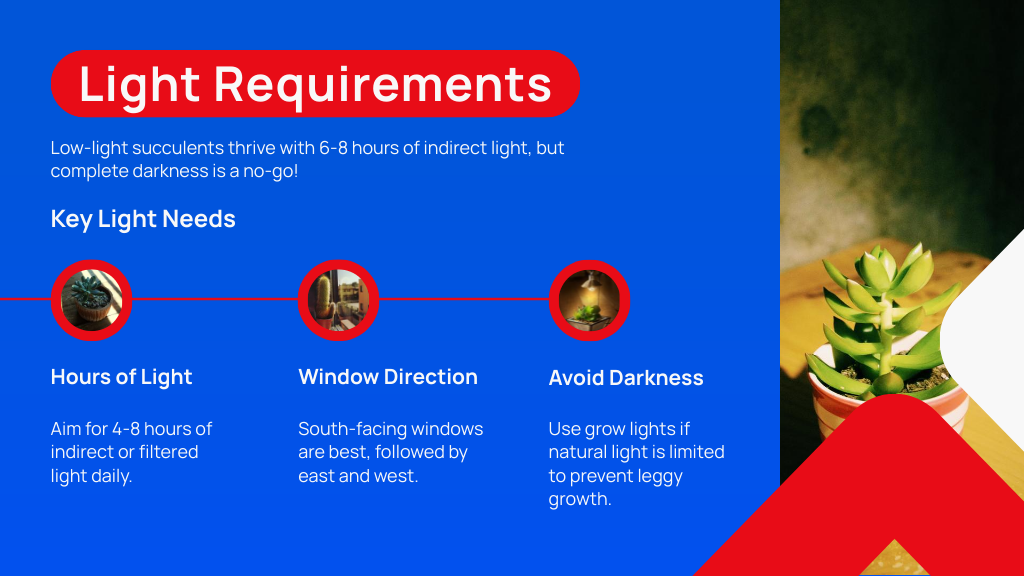
Although low-light succulents can survive with as little as 4 hours of light daily, they thrive best when they get 6 to 8 hours. If you’re growing indoor succulents, placing them near south-facing windows is ideal since these spots offer the most natural light. East and west-facing windows also work well for succulents for inside, providing moderate sunlight throughout the day.
Keep in mind, complete darkness won’t support your plants, so if natural light is limited, using grow lights is a smart move. Watch for signs like leggy growth or slow development, which indicate your succulents aren’t getting enough light. Regularly checking your plants helps guarantee they stay healthy and vibrant in your indoor space.
If you’re looking for a low-light succulent that’s both tough and visually striking, the Snake Plant (Dracaena trifasciata) is a perfect pick. Known as mother-in-law’s tongue, it thrives in dim indoor spaces with minimal care. Its tall, sword-like leaves come in various green shades, often edged with yellow or white, adding a sleek look to any room.
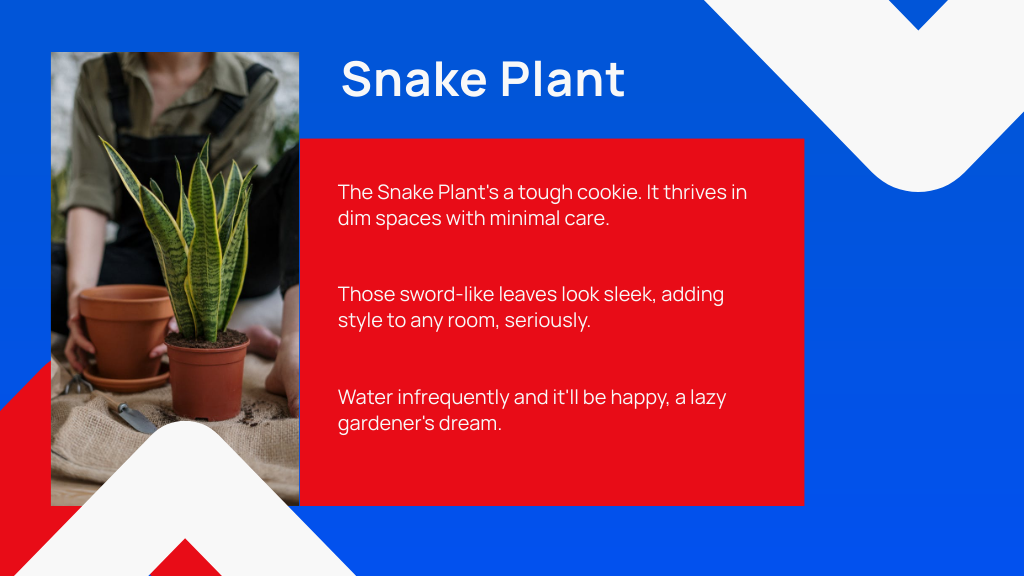
Here’s why you’ll love it:
This resilient classic combines beauty and practicality effortlessly.
If you’re looking for a small succulent that fits nicely on a windowsill, Lance Aloe’s compact size makes it perfect. It only grows about 8 inches tall and spreads up to a foot wide, so it won’t take over your space. Plus, its hardy nature means you won’t have to fuss much with watering or light to keep it thriving.
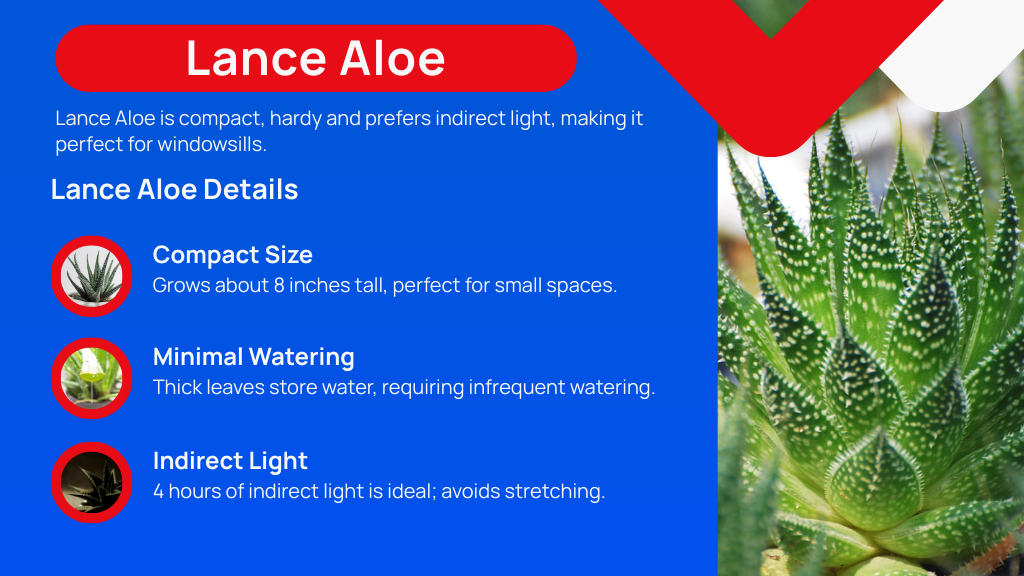
One of the best things about Lance Aloe (Aloe aristata) is its compact size, typically growing to around 8 inches tall and spreading up to a foot wide. This makes it perfect if you’re looking to add greenery without taking up too much space. Its slow growth rate means it stays manageable, so you won’t need to repot often.
Here are three key points about its size and growth:
You’ll find Lance Aloe a charming, space-friendly succulent.
While Lance Aloe is compact and hardy, giving it simple care and maintenance makes all the difference in keeping it healthy. You’ll want to place it where it gets at least 4 hours of indirect light daily to prevent stretching, even though it tolerates low light well. Use a well-draining potting mix, like a cacti blend, to avoid water retention.
Water sparingly, allowing the soil to dry out completely between watering sessions—overwatering is the main threat to its health. This succulent’s thick, fleshy leaves store water, so infrequent watering suits it perfectly.
Its resilience and minimal needs make it a great choice if you’re new to succulents or have a busy lifestyle. With just a little attention, your Lance Aloe will thrive indoors.
If you're looking to grow Echeveria in low-light spots, focus on gray or blue varieties since they handle shade better than brighter-colored types.
Make sure they get at least four hours of indirect light daily to keep them from stretching out. Using well-draining soil and pruning leggy growth will help your Echeveria stay healthy and compact even in less light.
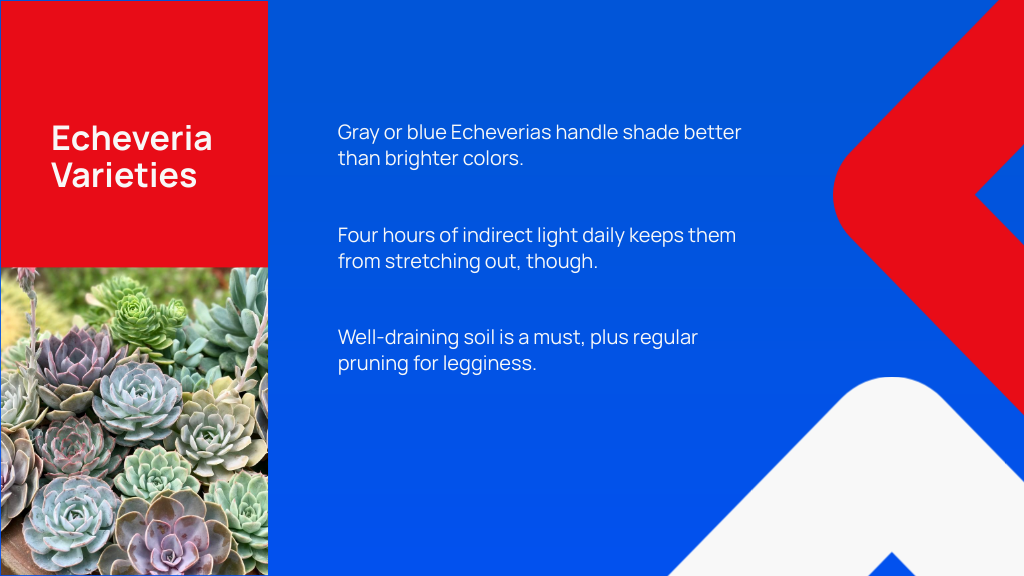
Though Echeveria plants are often associated with bright sunlight, certain varieties like Echeveria lilacina can thrive in low-light conditions if they receive at least four hours of indirect light daily.
If you want to grow Echeveria indoors with limited light, focus on selecting the right types and colors. Here are three shade-tolerant Echeveria tips:
With these choices, your Echeveria can happily brighten low-light spaces without the usual sun demands.
Selecting the right Echeveria varieties is just the start; caring for them properly in low-light conditions will keep them thriving. Gray or blue Echeverias handle shade better than green or pink ones, but they still need at least 4 hours of light daily to avoid stretching.
Use well-draining soil, like a cactus mix, to prevent root rot since low light slows drying. Water sparingly—let the soil dry completely between waterings to avoid overwatering issues.
Position your Echeverias near east or west-facing windows to provide gentle light without harsh sun exposure. Don’t forget to rotate your plants regularly to encourage even growth and keep them from leaning toward the light source. With these steps, your shade-friendly Echeverias will stay healthy and attractive indoors.
The Panda Plant, with its fuzzy leaves covered in tiny white hairs, adds a unique texture to your indoor garden. This succulent grows between 12 and 18 inches tall, perfect for desks or tabletops. It prefers bright, indirect light but can handle low light, making it great for spots with limited sunlight.
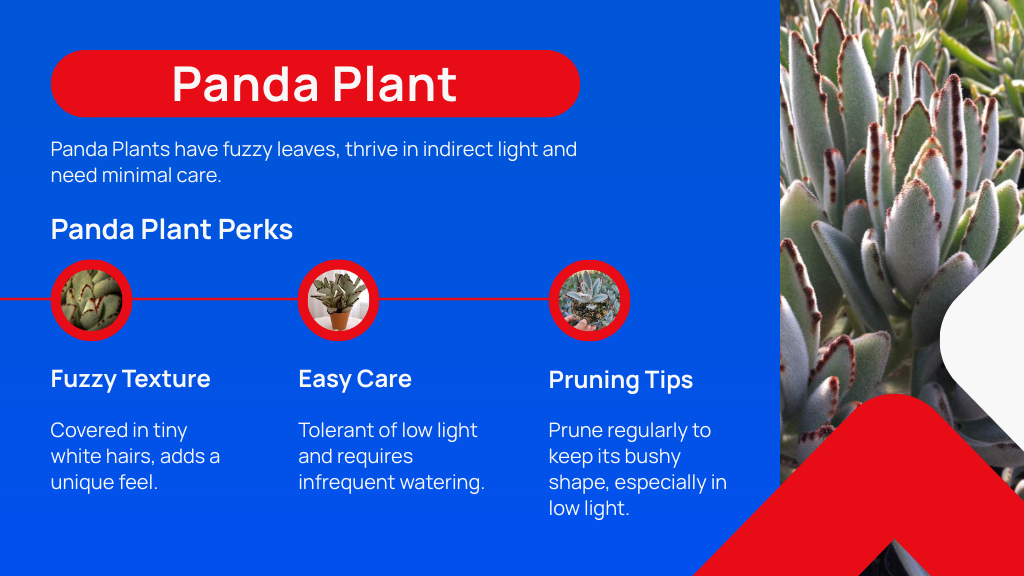
To care for your Panda Plant:
With minimal care, your Panda Plant will thrive and enhance your indoor space.
If you enjoyed the easy care and unique look of the Panda Plant, you’ll appreciate the Zebra Haworthia as well. This succulent is perfect for beginners because it thrives in low light and demands minimal maintenance.
Its distinctive striped leaves, growing up to 5 inches tall, add a striking touch to any indoor space. You’ll want to plant it in well-draining soil and water only when the soil feels nearly dry to avoid overwatering and root rot.

The Zebra Haworthia adapts well to indirect sunlight or partial shade, making it ideal for rooms with limited natural light. Plus, it helps improve indoor air quality, so it’s a smart and attractive addition to your home or office.
One of the most enchanting indoor succulents for low-light spaces is the Mistletoe Cactus, known for its delicate, finger-like leaves that cascade gracefully.

This unique succulent thrives in indirect light and shaded conditions, making it perfect for rooms with limited sunlight. If you’re considering adding one to your collection, here’s what you need to know:
The Mistletoe Cactus adds a distinctive, elegant touch to any indoor space with its flowing growth habit.
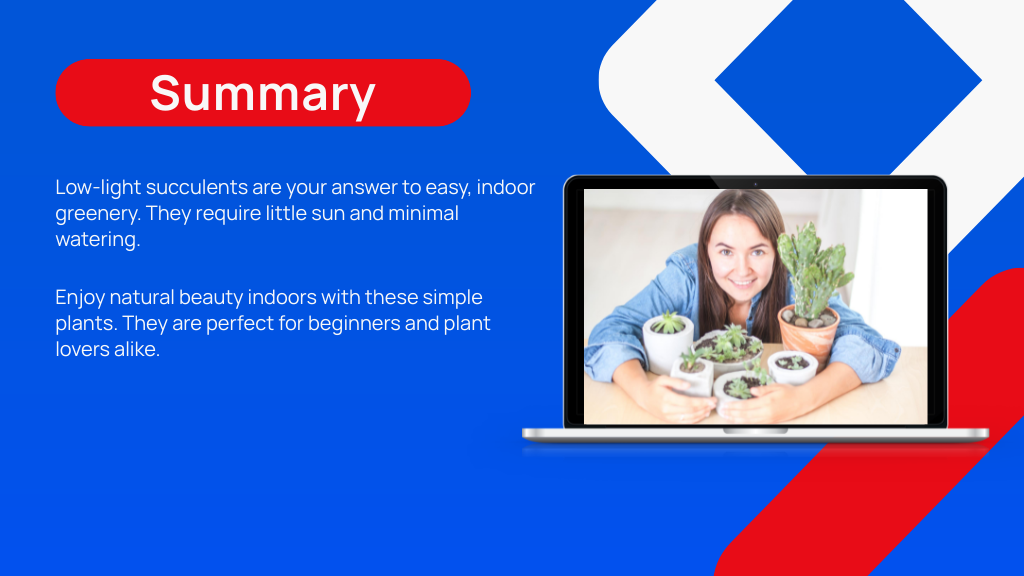
No matter which low-light succulent you choose, you’ll enjoy plants that thrive with minimal sun, require little water, and bring natural beauty indoors. Whether it’s the resilient snake plant, the compact lance aloe, or the fuzzy panda plant, each offers easy care, unique charm, and a splash of green. You don’t need bright windows, constant attention, or expert skills to keep these succulents happy—they’re perfect for you.
Your email address will not be published. Required fields are marked *